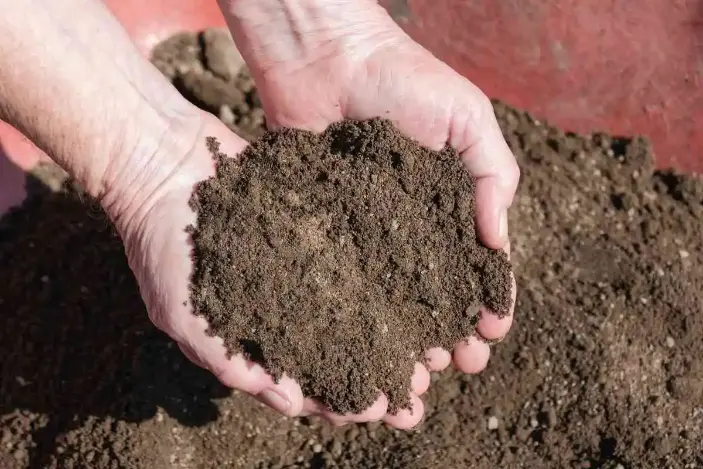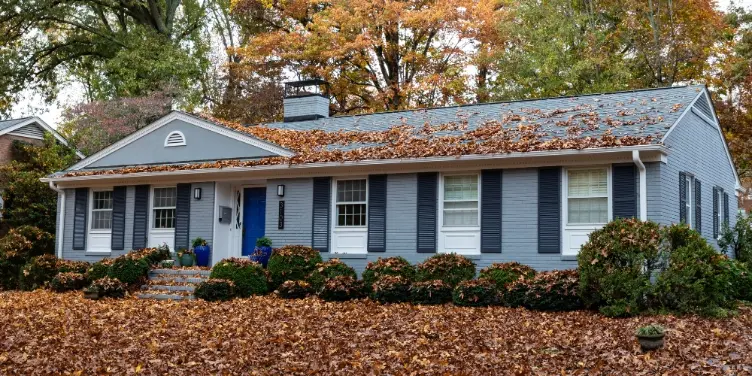

What Separates Fill Dirt from Topsoil?
What is Fill Dirt?
Fill dirt is a type of dirt commonly used to fill depressions or holes in the ground to create a level surface for various landscaping projects. It typically lacks organic matter and is often composed of subsoil, clay, sand, and rocks. Fill dirt is also used in construction projects to create a stable base for foundations, driveways, and roads. It can also be used to build up the grade of land for landscaping and gardening purposes. Fill dirt is often obtained from excavation sites, where it is dug up and then transported to the desired location for filling.
Topsoil Vs. Fill Dirt: Which is Best? Infographic by Splendid Landscapes
Composition of Fill Dirt
Fill dirt is primarily made up of subsoil, which is the layer of soil underneath the topsoil. It may also contain varying amounts of clay, sand, and rocks, depending on its source and location. In addition, fill dirt may also contain organic matter, such as decaying plant material or small roots. This can provide nutrients to the soil and help improve its fertility.
The exact composition of fill dirt can vary widely, depending on where it is sourced from and what materials are mixed in during its production. It is important to consider the specific requirements for your project and choose fill dirt with the appropriate composition to ensure the best results.
Uses of Fill Dirt
Fill dirt is primarily used to fill holes, level uneven ground, and create a stable base for construction and landscaping projects. It is commonly employed for filling and compacting areas where a solid, stable foundation is needed.
While fill dirt is not suitable for growing plants, it is an important material for creating a stable and level surface for construction and landscaping projects. It is typically less expensive than topsoil and is widely used in various earth-moving applications.
Differences from Topsoil
Fill dirt differs from topsoil in its composition and intended use. Unlike topsoil, fill dirt usually lacks organic matter and is not suitable for supporting plant growth. Its main purpose is to provide structural stability and fill voids in the ground.
What is Topsoil?
Topsoil, on the other hand, is the uppermost layer of soil, containing the highest concentration of organic matter and microorganisms. It is essential for supporting plant growth and providing nutrients necessary for healthy vegetation.
Composition of Topsoil
Topsoil consists of a mix of organic matter, such as decomposed plant material and humus, along with mineral particles, providing a fertile environment for roots to thrive.
Uses of Topsoil
Topsoil is commonly used in gardening and landscaping to promote healthy plant growth, improve soil quality, and enhance the overall appearance of outdoor spaces. It is essential for establishing new gardens and nurturing existing vegetation.
Differences from Fill Dirt
Unlike fill dirt, topsoil contains organic matter, making it an ideal medium for supporting plant life and promoting healthy root development. It is not primarily used for structural purposes like fill dirt but rather for enhancing the fertility and vitality of the soil.
Which is Best for Your Landscaping Project?
When deciding between fill dirt and topsoil for a landscaping project, it is crucial to consider the nutrient content, soil quality improvement, and impact on plant growth.
Nutrient Content
Topsoil offers a rich source of nutrients and organic matter essential for plant growth, while fill dirt lacks these crucial elements, making it unsuitable for supporting most vegetation.
Improving Soil Quality
Topsoil plays a pivotal role in improving soil quality by enhancing its fertility and providing a conducive environment for beneficial soil organisms. In contrast, fill dirt primarily contributes to structural stability and leveling but does not enrich the soil composition.
Enhancing Plant Growth
For promoting healthy plant growth and sustaining vibrant landscapes, topsoil is the preferred choice due to its ability to support root development and optimize nutrient uptake. Fill dirt, being devoid of essential nutrients, does not foster optimal plant growth.
Uses in Gardening and Landscaping
Both topsoil and fill dirt find specific applications in gardening and landscaping, catering to different requirements for outdoor projects.
Enhancing Drainage
Topsoil aids in enhancing drainage and moisture retention, especially in areas with poor soil structure, promoting healthier root systems. In comparison, fill dirt is used for filling voids and creating a level surface but does not actively contribute to drainage improvement.
Backfilling Projects
Fill dirt is commonly used for backfilling projects, compacting areas, and creating a stable base for construction and landscaping elements, while topsoil is utilized for promoting fertility and supporting plant life in gardens and green spaces.
New Grass Establishment
When establishing new grass or lawn areas, topsoil is essential for providing the necessary nutrients for seed germination and sustaining healthy grass growth. Fill dirt, with its minimal organic content, is not suitable for nurturing new grass and sustaining lush landscapes.

So What Should You Use?
In conclusion, understanding the distinctions between topsoil and fill dirt is crucial for making informed decisions in landscaping and gardening projects. While fill dirt serves structural and leveling purposes, topsoil plays a vital role in nurturing healthy vegetation and promoting optimum soil fertility. Selecting the appropriate soil type based on the specific project requirements is essential for achieving successful and sustainable outdoor spaces.
Key Differences Between Fill Dirt and Topsoil
Key differences between topsoil and fill dirt mainly lie in their composition and intended uses. Topsoil is the top layer of soil that is often rich in nutrients and organic matter, making it ideal for planting and landscaping.
On the other hand, fill dirt is the soil usually used to fill holes in the ground or level uneven terrain. Fill dirt is typically less nutrient-rich compared to topsoil and may contain rocks, debris, or other contaminants. The costs of filling dirt are rising due to its increasing demand and limited availability. When considering whether to use topsoil or fill dirt, it is important to assess the specific needs of your project.
Expert Insights and Recommendations
Expert insights and recommendations confirm that when deciding between dirt vs topsoil, it’s essential to consider your project’s specific needs. Topsoil is often pricier than fill dirt but provides high-quality nutrients for your plants. Fill dirt can be used to fill in holes or create a sturdy foundation at a more affordable price per cubic yard.
When comparing topsoil vs fill dirt, it’s crucial to understand the differences. Topsoil is also used to fill and level yards, while fill dirt is usually used for large landscaping projects. Whether you choose clean fill dirt or a specific type of fill dirt, consider the requirements of your project.
Regional Considerations
Regional Considerations play a key role in deciding whether to use fill dirt vs topsoil for your project. In areas where the top soil is of poor quality, it may be better to use fill dirt to add volume to your yard. Additionally, fill dirt also provides a more affordable option compared to high-quality topsoil.
Considering the types of soil to use, fill dirt vs topsoil is a common decision. While topsoil would typically be the first choice for many, it’s important to also think of dirt as a viable option. Fill dirt is often used to fill in areas where biological soil activity involving microorganisms is lacking.
The choice between fill dirt or topsoil largely depends on the quality of the soil in your region. Fill dirt involves using a mixture of soil usually found underneath the topsoil, while topsoil is the soil that you would typically use dirt for gardening or landscaping purposes. There may be a downside to topsoil when it comes to affordability and availability.
In the end, it’s important to make the right choice based on your specific needs and budget. Whether you decide to use fill dirt for your project or opt for fill sand, both options can be beneficial in different scenarios. Just be sure to consider the pros and cons of each before making a decision.
Safety and Precautions
Safety and precautions should always be a top priority when working with different types of soil for your project. When deciding between fill dirt vs topsoil, it’s important to consider the quality of the soil and how it will affect your landscaping.
Topsoil would typically be preferred for planting, as it is the soil usually found underneath the top layer and supports biological soil activity involving microorganisms. However, fill dirt also has its advantages, as it is often used to fill and add volume to your yard. If you need an affordable fill, fill dirt provides a cost-effective solution.
Choosing between fill dirt or topsoil, consider the specific needs of your project. Fill dirt involves using dirt to fill in low spots or create mounds, while topsoil is ideal for planting and supporting vegetation. While topsoil is typically more expensive, fill dirt often gets the job done without breaking the bank. Ultimately, it’s important to make the right choice based on the requirements of your landscaping project.
References and Further Reading







